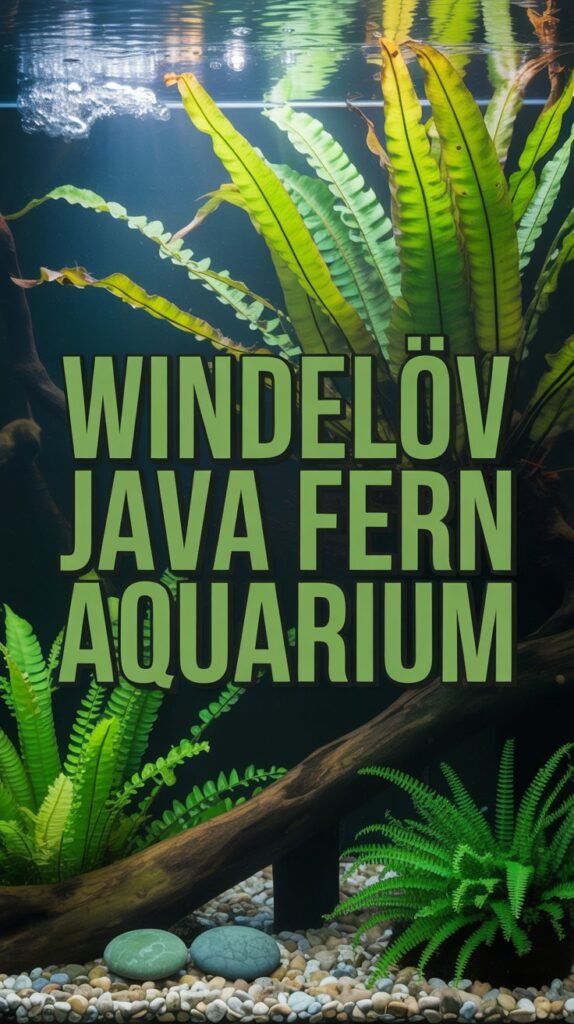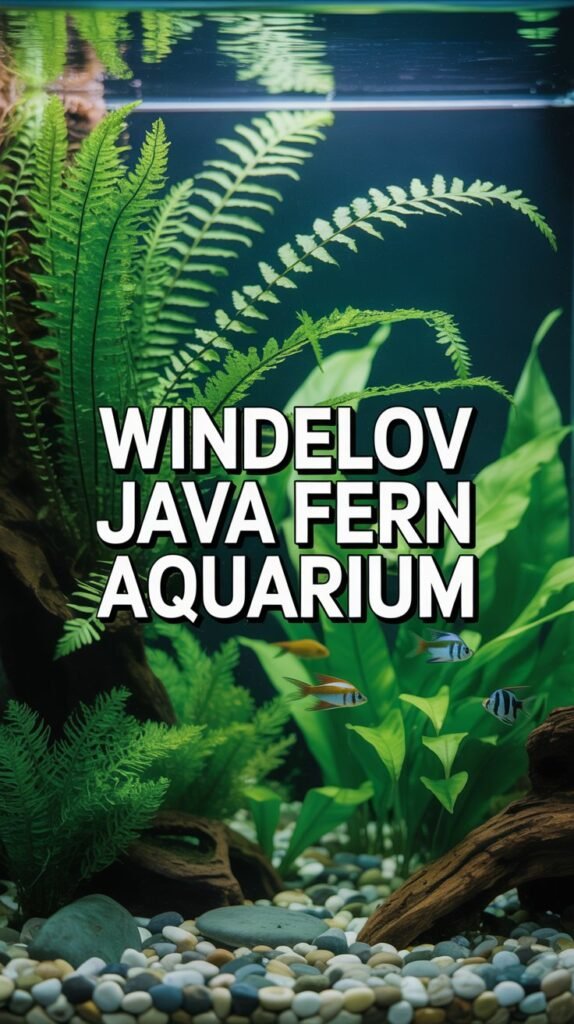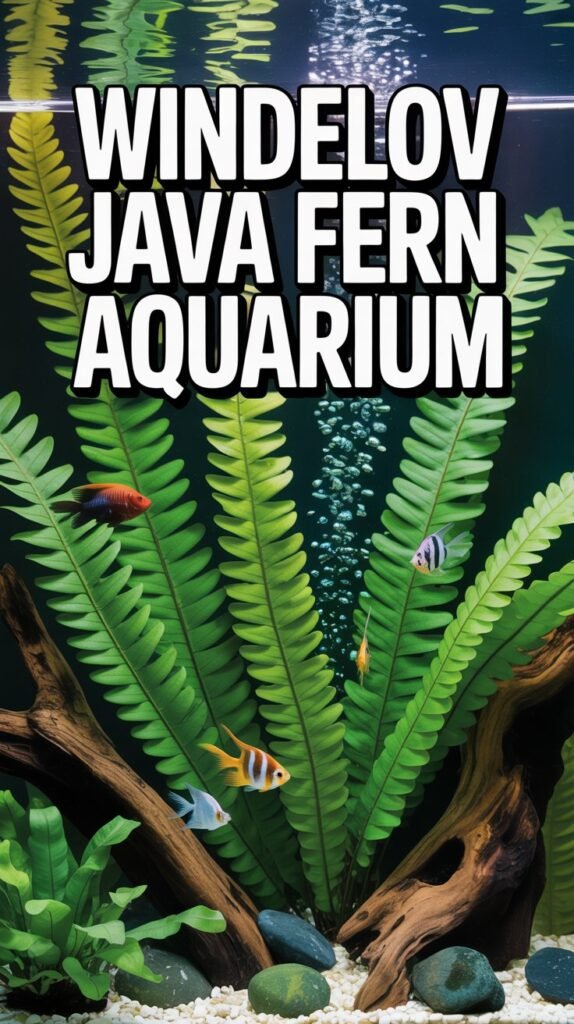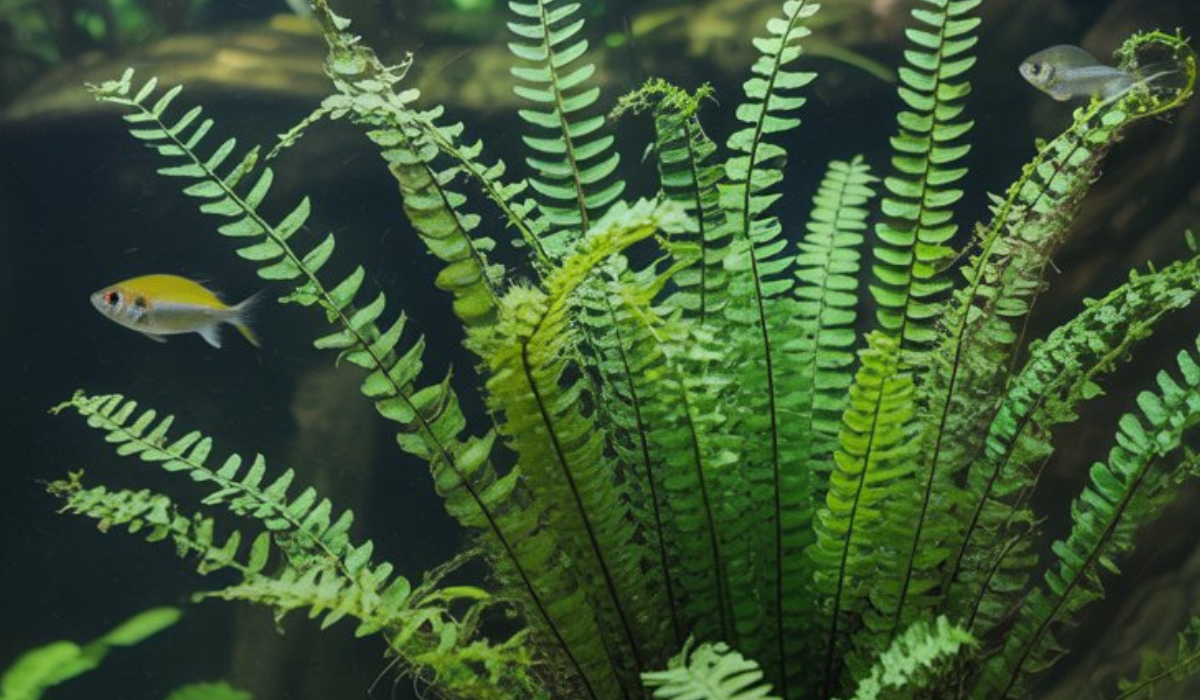Aquatic plants play a crucial role in maintaining the beauty and balance of an aquarium ecosystem. Among the most beloved species by aquascapers and aquarium enthusiasts is the Windelov Java Fern — a stunning, hardy, and beginner-friendly plant that adds lush greenery and texture to any tank. Known scientifically as Microsorum pteropus ‘Windelov’, this unique plant is a cultivated variant of the classic Java Fern and is prized for its elegant, lace-like leaves.
In this comprehensive guide, we’ll explore everything about the Windelov Java Fern, from its origins and ideal conditions to planting, propagation, and maintenance. Whether you are setting up your first planted tank or refining your aquascape, this plant is a must-have addition.
1. What Is Windelov Java Fern?
The Windelov Java Fern is a cultivated variant of the traditional Java Fern (Microsorum pteropus), originally native to Southeast Asia. It was developed by Tropica Aquarium Plants, named after its founder Holger Windeløv, and is admired for its finely divided, bushy leaf tips that create a graceful and decorative look underwater.
The plant grows from a rhizome, which is a thick, horizontal stem that produces both leaves and roots. This makes it quite different from traditional rooted plants — it doesn’t need to be planted in substrate. Instead, it thrives when attached to rocks, driftwood, or other surfaces, making it perfect for aquascaping and aquariums with minimal substrate.
2. Key Features of Windelov Java Fern

Here are the standout features that make this plant so popular:
- Scientific Name: Microsorum pteropus ‘Windelov’
- Family: Polypodiaceae
- Origin: Cultivar (derived from Southeast Asian species)
- Growth Rate: Slow to moderate
- Maximum Height: 15–25 cm (6–10 inches)
- Light Requirement: Low to medium
- CO₂ Requirement: Optional (not necessary)
- Temperature Range: 18–30°C (64–86°F)
- pH Range: 6.0–7.5
- Water Hardness: Soft to moderately hard
- Placement: Midground or background plant
Its slow growth rate and adaptability to low light make it an excellent choice for beginners who want an attractive, low-maintenance aquatic plant.
3. The Unique Appearance of Windelov Java Fern
What makes the Windelov Java Fern so distinct is its frilly, branched leaf tips. Each leaf divides into multiple small, narrow lobes that resemble delicate green fingers waving underwater. This gives the plant a light, airy, and highly ornamental texture that contrasts beautifully with broader-leafed species or carpeting plants.
The rhizome, usually dark green to brown, grows horizontally and produces roots that cling to wood or rocks. This root system helps it attach firmly to hardscape surfaces, creating a natural and stable foundation in aquascapes.
4. Ideal Aquarium Conditions for Windelov Java Fern
Although Windelov Java Fern is hardy, providing optimal conditions can maximize its growth and visual appeal.
a. Water Parameters
- Temperature: 20–28°C (68–82°F)
- pH: 6.0–7.5
- Hardness: Soft to moderately hard water
This plant tolerates a wide range of water parameters, but maintaining stable conditions ensures consistent growth and vibrant green leaves.
b. Lighting
Windelov Java Fern thrives in low to medium light. Excessive lighting can lead to algae growth on its leaves, so avoid direct, intense illumination. LED aquarium lights set for 6–8 hours per day work perfectly.
c. Filtration and Flow
Java Ferns enjoy gentle water flow. A moderate current helps distribute nutrients evenly and prevents debris buildup on leaves, reducing the risk of algae.
5. How to Plant Windelov Java Fern
Unlike rooted plants, Windelov Java Fern should never be buried in substrate, as its rhizome will rot without proper airflow. Instead, attach it to aquarium decor.
Step-by-Step Planting Guide:
- Prepare the Surface: Choose a piece of driftwood, rock, or aquarium ornament.
- Attach the Fern: Use fishing line, thread, or aquarium-safe glue to secure the rhizome.
- Position Properly: Ensure that the rhizome is above the substrate and exposed to water flow.
- Allow Roots to Grip: Within a few weeks, roots will naturally attach, and you can remove the thread if desired.
This method mimics how the plant grows in nature — clinging to rocks and wood in rivers and streams.
6. Windelov Java Fern Maintenance and Care Tips

The Windelov Java Fern is among the easiest aquarium plants to maintain. However, a few care practices will ensure it stays lush and healthy.
a. Trimming Dead Leaves
Occasionally, older leaves may turn brown or develop spots. Trim these off at the base to promote new growth and maintain the plant’s aesthetic appeal.
b. Avoid Planting in Substrate
As mentioned, burying the rhizome can lead to decay. Keep it above the substrate to ensure oxygen flow.
c. Regular Cleaning
Dust or algae can accumulate on leaves over time. Gently clean with your fingers or a soft brush during water changes.
d. Fertilization
While not mandatory, liquid fertilizers containing micronutrients like potassium, iron, and magnesium can enhance growth and coloration. However, avoid root tabs — the nutrients should come from the water column instead.
e. CO₂ Injection
Windelov Java Fern does not require CO₂ supplementation. However, adding CO₂ can promote faster growth and more vibrant green leaves in heavily planted aquariums.
7. Propagation of Windelov Java Fern
Propagation is one of the most fascinating aspects of this plant. Windelov Java Fern can reproduce through rhizome division and plantlet formation.
a. Rhizome Division
- Remove the plant from the aquarium.
- Cut the rhizome into smaller pieces using a sterilized blade.
- Ensure each piece has at least 2–3 leaves and a portion of root.
- Reattach each division to separate surfaces.
b. Plantlet Formation
New baby plants (plantlets) often grow from the tips of older leaves. Once they reach a size of about 1–2 inches, gently detach and reattach them to a new spot in the tank. These plantlets will quickly establish themselves.
Propagation is a slow but rewarding process that ensures a steady supply of healthy new plants.
8. Common Problems and Solutions
Even though Windelov Java Fern is hardy, a few issues may arise if not cared for properly.
a. Yellowing or Transparent Leaves
Cause: Nutrient deficiency (especially iron or potassium).
Solution: Add liquid fertilizers or adjust lighting duration.
b. Black or Brown Spots
Cause: Natural aging or temporary stress.
Solution: Remove old leaves; ensure stable water conditions.
c. Rhizome Rot
Cause: Rhizome buried in substrate or insufficient oxygen.
Solution: Keep rhizome exposed and ensure good water flow.
d. Algae Growth
Cause: Excessive lighting or nutrient imbalance.
Solution: Reduce light hours, introduce algae eaters like Amano shrimp, or improve water circulation.
9. Aquascaping with Windelov Java Fern

Windelov Java Fern is a favorite among aquascapers because of its flexibility and visual charm. Here’s how it can enhance your tank’s design:
- Background Plant: Attach it to rocks or wood at the back for a dense, natural backdrop.
- Midground Focal Point: Combine with mosses or Anubias for layered textures.
- Driftwood Design: When attached to driftwood, the frilly leaves create a jungle-like effect.
- Biotope Aquariums: Perfect for Southeast Asian setups mimicking natural streams.
Its dark green hue pairs beautifully with bright fish species like guppies, tetras, or rasboras.
10. Compatibility with Fish and Invertebrates
Windelov Java Fern is highly compatible with almost all aquarium species, making it a safe choice for community tanks.
- Safe for Herbivorous Fish: Its leaves are tough and bitter, discouraging fish from nibbling.
- Excellent Shelter: Provides cover for shy fish and fry.
- Beneficial for Invertebrates: Shrimp and snails love grazing on biofilm that forms on its leaves.
It’s especially well-suited for tanks with betta fish, discus, or shrimp colonies, where soft, shaded environments are preferred.
11. Benefits of Windelov Java Fern in Aquariums
Beyond aesthetics, this plant contributes to the overall health and balance of your aquarium ecosystem.
- Natural Filtration: Absorbs nitrates and other toxins from water.
- Algae Control: Competes with algae for nutrients, helping keep it in check.
- Oxygenation: Enhances oxygen levels through photosynthesis.
- Stress Reduction: Creates natural hiding spots, reducing fish stress.
- Low Maintenance: Perfect for both beginners and professionals.
These benefits make the Windelov Java Fern a cornerstone of healthy, vibrant aquascapes.
12. Tank Mates for Windelov Java Fern
Ideal tank mates include:
- Tetras (Neon, Cardinal, Ember)
- Guppies and Mollies
- Betta Fish
- Dwarf Gouramis
- Corydoras Catfish
- Cherry or Amano Shrimp
- Otocinclus Catfish
Avoid large, plant-eating fish like goldfish or African cichlids, which may uproot or damage delicate leaves.
13. Why Choose Windelov Java Fern for Your Aquarium
Here’s why this plant is a top-tier choice for any aquarium:
- Adapts to almost all freshwater setups
- Doesn’t need CO₂ or strong lighting
- Easy to attach to decor
- Looks elegant and natural
- Long-lasting and resilient
- Perfect for aquascaping creativity
Its hardiness, combined with its ornamental beauty, makes it an irreplaceable plant in both beginner and advanced planted tanks.
14. Final Thoughts
The Windelov Java Fern is more than just an aquarium plant — it’s a living piece of art. Its unique leaf shape, low maintenance, and ability to thrive in a variety of conditions make it an excellent choice for both new and experienced aquarists. Whether you’re designing a lush jungle aquascape or a minimalist layout, this plant’s graceful presence adds unmatched depth and natural charm.
With the right care — stable water parameters, low to medium lighting, and proper attachment — your Windelov Java Fern will thrive for years, becoming a focal point in your underwater world.
FAQs About Windelov Java Fern
1. How fast does Windelov Java Fern grow?
It grows slowly, typically producing new leaves every few weeks. Growth can be enhanced with liquid fertilizers or CO₂ supplementation.
2. Can I plant Windelov Java Fern in substrate?
No, never bury the rhizome. It should be attached to rocks, wood, or decorations.
3. Why are the leaves turning brown or black?
Old leaves naturally die off. If new leaves are also affected, check lighting and nutrient levels.
4. Does Windelov Java Fern need CO₂?
No, CO₂ is optional. It will grow well without it, although supplementation can boost growth and color.
5. Is it suitable for beginners?
Absolutely. It’s one of the easiest and most forgiving plants, perfect for novice aquarists.
6. Can I keep it with goldfish or cichlids?
Avoid these fish, as they may uproot or damage the plant.
7. How do I propagate it?
You can divide the rhizome or detach small plantlets that form on older leaves.
8. How can I prevent algae on the leaves?
Maintain proper lighting (6–8 hours daily), perform regular water changes, and avoid overfeeding fish.
9. What makes Windelov Java Fern different from regular Java Fern?
Its leaf tips are finely divided and bushy, giving it a more decorative, lace-like appearance.
10. Can Windelov Java Fern survive without fertilizer?
Yes, but using a quality liquid fertilizer will promote lush, vibrant growth.

